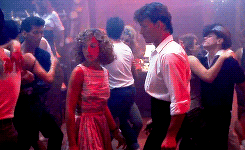All the scenes and shots of a shooting script are numbered and each scene and shot are broken down into all the component pieces required to film it. The production assistants and director can then arrange the order in which the scenes will be shot for the most efficient use of stage, cast, and location resources. The shooting script includes both dialogue, and key instructions: sound fx, cues, character actions and camera movements.
 |
| A good example of a Shooting Script. |
- A shot number to clearly identify each shot, to help film crew keep on track.
- Shot Type. e.g. Mid Shot, Establishing Shot, ect.
- Camera Angle. e.g. High, Straight On, Low, Canted.
- Lighting. e.g. high/low key, artificial/natural.
- Shot Movement. e.g. pan, tilt.
- Shot Duration in seconds.
- Location where the scene will take place.
- A list of Actors present in the specified shot.
- Stage Directions/Actions carried out in the shot.
- Dialogue spoken in the shot.
- A list of props needed in the shot.
- Music/Sound FX. e.g. Sountrack,
- Voiceover ect.
Shooting Scripts are easy to read, and good for all the different film crew that will be using them. But some drawbacks are that sometimes they have unrealistic durations for each shot, as the makers of the script don't have a realistic sense of time, as they are not filming the shot, ect. The script is a shared vision, which is hard to bring together, as everyone has different ideas per shot, so it is hard to bring one vision together.
We had a go at following a shooting script made by a previous AS group a few years back and this was the outcome:
Strengths of our work:
- There was a good variety of shot types to use, which focused on each shot and gave it a different meaning, which created a good sequence in the end.
- The setting was easy to create, and the simplicity of the location was easy to re-enact.
Weakness of our work:
- WE BROKE THE 180 RULE MULTIPLE TIMES. Our lack of continuity was ridicuous, and it was hard to remember to be continuous.
- The durations over ran for each shot, which caused our shots to be longer than they had planned to be.
- Technical difficulties regarding zooming the wrong way and not being able to turn the camera off after filming the scene. *INSERT EMBARASSMENT GIF*
Another thing we did this week was think about audience research into our idea for our opening sequence. We have decided to use Vox Pops to undertake our research, as it gives opinionated people to voice their opinions on our idea. An example of Vox Pops is:
We will use these vox pops to find out:
- What BSR films they know and like.
- Why they like BSR - including Uses and Gratifications to explain their points.
- What they think of our ideas.
- Ideas they have for a BSR film.




































